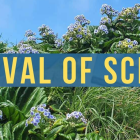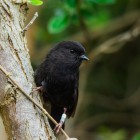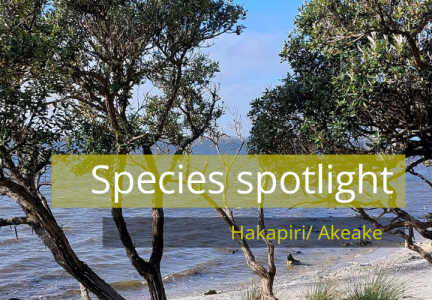
Blog and news
Species Spotlight: Hakapiri/ Akeake
The windblown profile of the hakapiri/Chatham Islands akeake is part of many iconic Chatham landscape scenes - including our Trust's own logo. This endemic is an ecologically and socially important tree on our remote islands. Professor Peter de Lange, one of Aotearoa’s prominent botanists and current chair of the Chatham Islands Conservation Board, shares his perspectives on the oversized daisy.
The full, unedited version of this text can be found here.
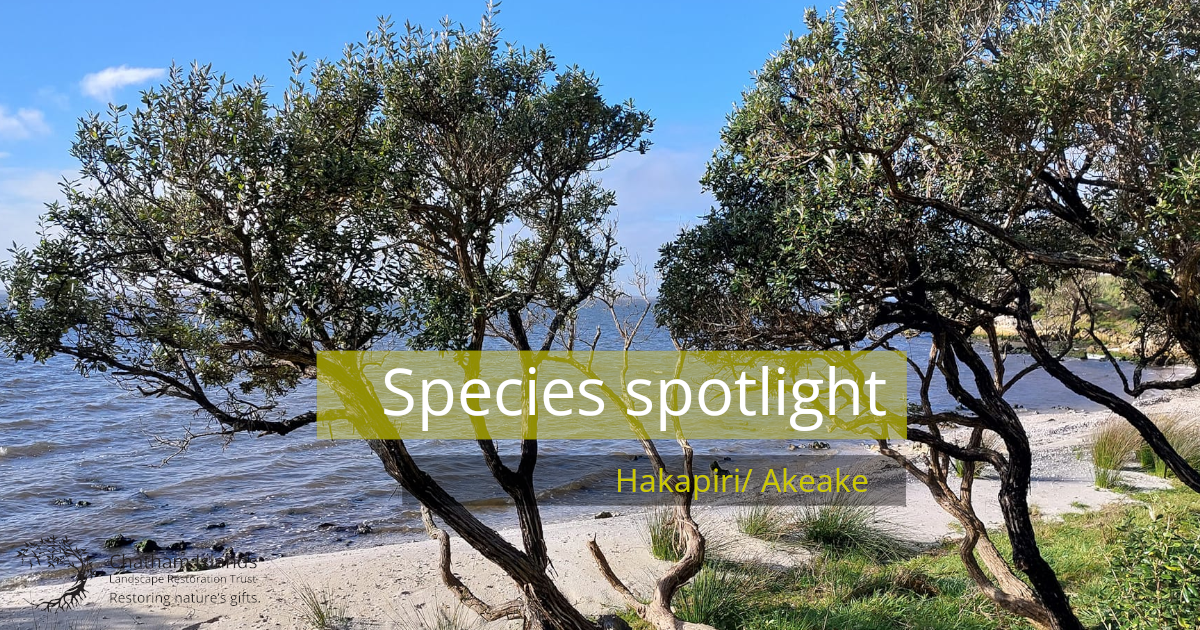
Hakapiri/akeake on the shores of Te Whanga. Image: Peter de Lange
The hakapiri/Chatham Island akeake is resilient.
The Ta Re Moriori name for Olearia traversiorum is 'hakapiri,' which means 'resilient.’ The Te Reo Maori name 'akeake'* has a similar meaning, in the sense of 'forever' (as in forever and forever – lasting). This Chatham Islands endemic has very hard, long persisting wood, and the tree is often the last species to fall over in sites where livestock have unrestricted access to forest.
Popular in gardens, specimens have been reported around the world, including in the Atacama Desert in Chile – truly a resilient plant, then! I have also seen it also along the Côte d'Azur, in Barcelona and in some parts of western Italy.
*A name that should not be confused with another akeake (Dodonaea viscosa) an indigenous tree and shrub to Aotearoa, including the Chatham Islands where it is called 'rautini akeake.’ Though quite unrelated to Olearia traversiorum, it has similar extremely hard, durable wood.
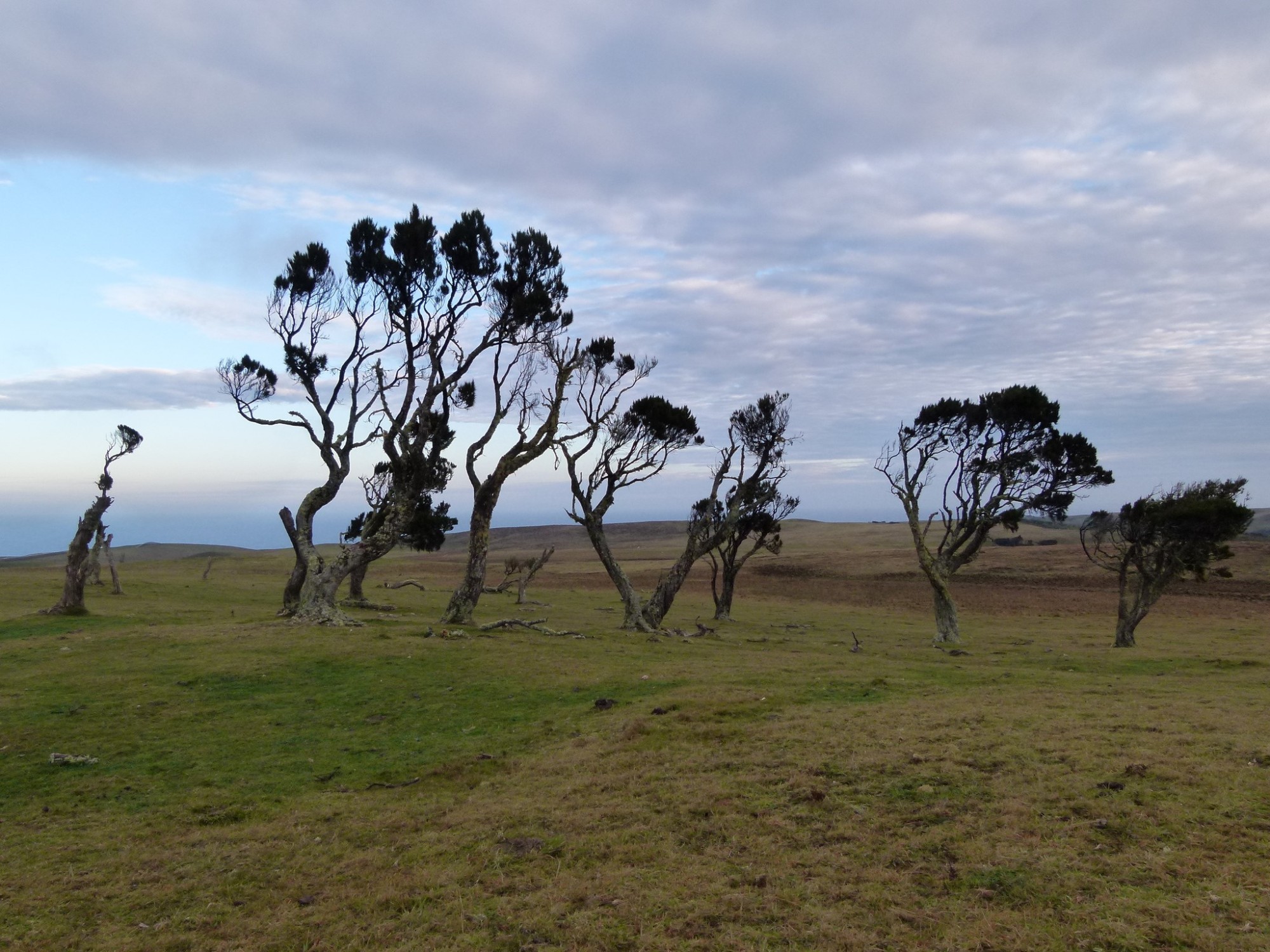
Hakapiri. Image: iNaturalist Robyn Smith
Hakapiri is part of the daisy family.
Typically, many people think of daisies as being small plants. There are many species of tree that are actually part of the daisy family.
Hakapiri/akeake belongs to the family Asteraceae, the daisy family, and then the genus Olearia. It is probably the largest species of the Aotearoa taxa currently assigned to the genus Olearia, reaching a maximum height of 18m. In 1996 I examined a tree on dunes above Ohira Bay that was 18m tall, with a spread of 15m. There has recently been some argument over where it is an Olearia at all, and in the last month it has been shifted to another daisy genus, Shawia. It is, however, too early to know whether this name change will be followed or not.
Flowering in this species used to consistently occur from November to January but, perhaps due to changing climate, we are now seeing flowering as early as late September. It has small cream, buff, or pale-yellow florets.
Hakapiri flowers. Image: DOC Tom Hitchon
Its preferred habitat is dune fields.
Like many Chatham Island endemic plants, hakapiri/akeake has a preferred habitat where it is numerically dominant. It took me a while to realise that the preferred habitat of hakapiri/akeake is dune fields and sandy, well-draining country. In these places (and there are very few of them left now) the tree often forms a monoculture, and it is here where the biggest trees once occurred.
Outside these habitats, the next most favoured are free-draining coastal sites overlying schist and basalt, and finally limestone. In the dense tarahinau forests of the southern tablelands and on Pitt Island one may find occasional large trees, but in these habitats hakapiri/akeake is never very common.
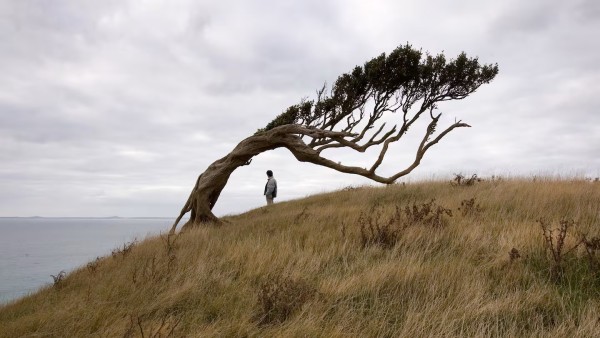
The isolated Chathams off the east coast of New Zealand offer stunning views. Image: Mark Mitchell; NZ Herald
There are few naturally-occuring hakapiri forests remaining on the inhabited islands.
Today, hakapiri/akeake is still abundant on the larger islands, and secure on those outer islands free of introduced browsing animals (especially those managed as Nature Reserves). On Rēkohu/Wharekauri and Pitt Island, the situation is less stable.
Whilst the tree is now being planted in the thousands for restoration projects, naturally occurring, intact, secure, and functional examples of this are scarce.
In part, this reflects the scarcity of reserved sites for hakapiri/akeake on those islands, the damage that can be inflicted by possums and feral browsing animals, and also the fact that the trees wood is both an excellent firewood (burning with great heat and lasting longer than many conventional woods) and timber.
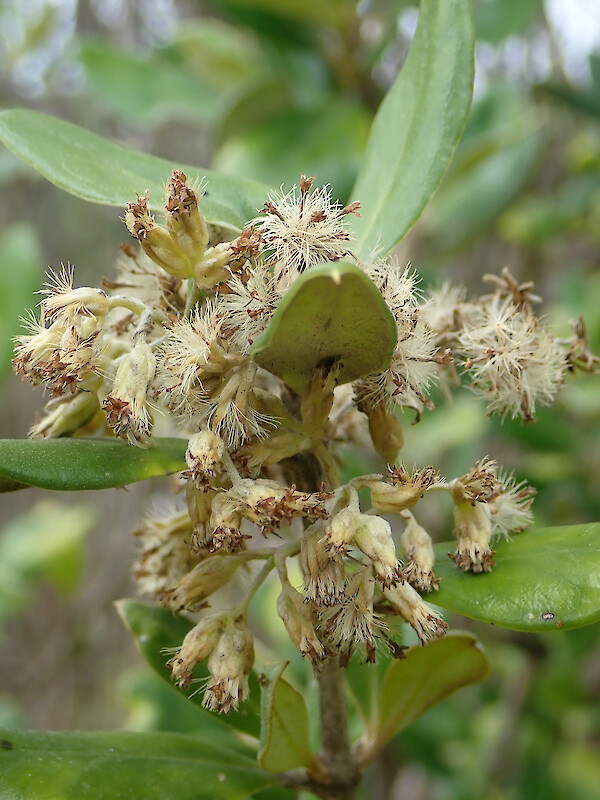
Mature hakapiri seed on Wharekauri Beach, 2021. Image: Peter de Lange
Despite this, hakapiri is now secure and has moved down a risk level.
Thanks in part to the widespread planting of hakapiri/akeake by islanders and diligent fencing, this species is now more secure than it has ever been. As such, it has dropped in threat status from 'Threatened - Nationally Vulnerable' to 'At Risk – Declining.’
The change in status, though encouraging, still reflects that over large parts of this species’ range it is still being lost.
Luckily, hakapiri/akeake is very easily grown from fresh seed, and – provided multiple trees are used to ensure genetic diversity – the risk of reduced viability in plantings is lessened. The species is also very easily grown from cuttings, and as such is reasonably popular still as a garden subject on mainland Aotearoa and overseas.
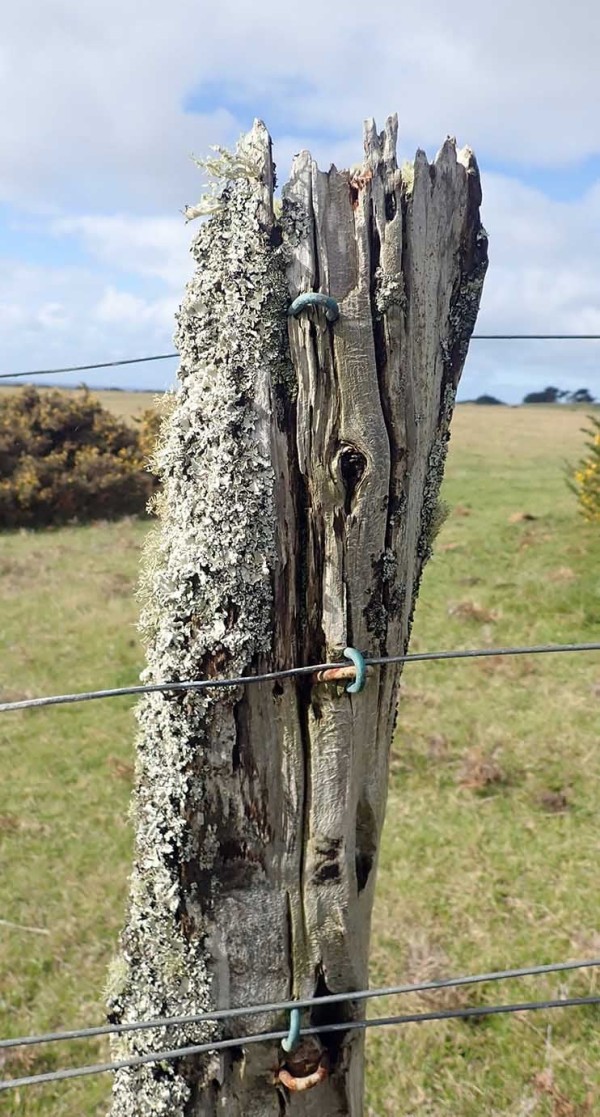
An old hakapiri fence post, 2021. Image: Peter de Lange
Hakapiri/akeake is important for people.
From an ethnobotanical perspective, I have already mentioned the use of trees as timber and firewood. I also heard from Chatham Islander Bob Goomes (now long passed alas) that another reason one finds isolated trees or stands of trees in pasture stems from hakapiri/akeake’s importance as rongoa (medicine).
Evidently, the foliage is an excellent food for cattle in times when grass is scarce; further, if cattle had scours the young growth of the tree was taken, boiled, and the cooled fluid used as a drench. According to Bob, this worked wonders not only on cattle but humans with the equivalent ailment! I have as yet never tried this (nor had the need). Being a very useful tree, it was often left standing when the other associated forest trees were cleared away for farmland.
I also recollect long time island resident and well-respected and loved matriarch of Pitt Island, Di Gregory-Hunt, telling me in 2008 that two well dried blocks of wood were sufficient to cook the Sunday roast.
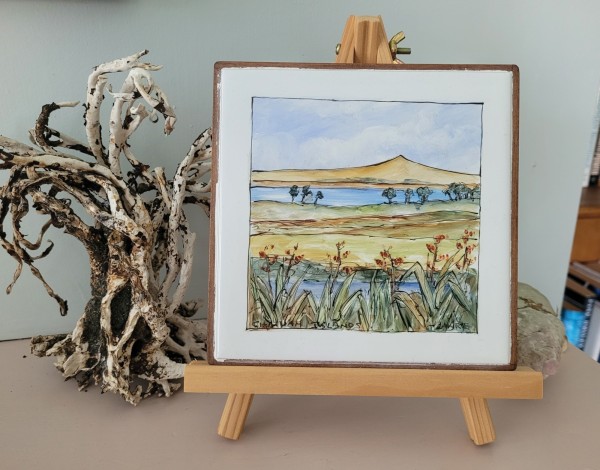
The hakapiri appears in a lot of iconic Chatham Island landscape scene. Art tile by Cherry Lawrie.
There is another Chatham Islands endemic akeake that inhabits swamp.
Until 2008, botanists had overlooked what islanders had been saying for years: there was another species of hakapiri/akeake, what they called 'swamp akeak.' This species is now recognised and known as Olearia telmatica. It is exclusive to permanently flooded swamp forest.
Hakapiri's scientific history is recorded in its scientific name.
The conventions for the scientific naming of plant species are set out in the “International Code of Nomenclature for algae, fungi and plants.”
Hakapiri/akeake was first made known to science from a range of specimens collected for von Mueller by Henry Travers on his first expedition to the islands in 1864. At that time the tree was still widespread and common on all of the main vegetated islands of the Chatham Islands group (except those commonly known as the Forty-Fours, the Sisters, and the Pyramid).
The scientific name for the tree (Olearia traversiorum) comes from Henry Travers and William Travers (Henry’s father), who both helped Mueller with his goal of publishing a Chatham Islands Flora. Originally, the species was named traversii, which only recognises one person, but in 2007 the zoologist Dr Colin Miskelly asked why it was named for just one person when the record clearly stated Baron von Mueller had named it for “father and son.” The species’ epithet has now been corrected to 'traversiorum' meaning 'of the Travers.'
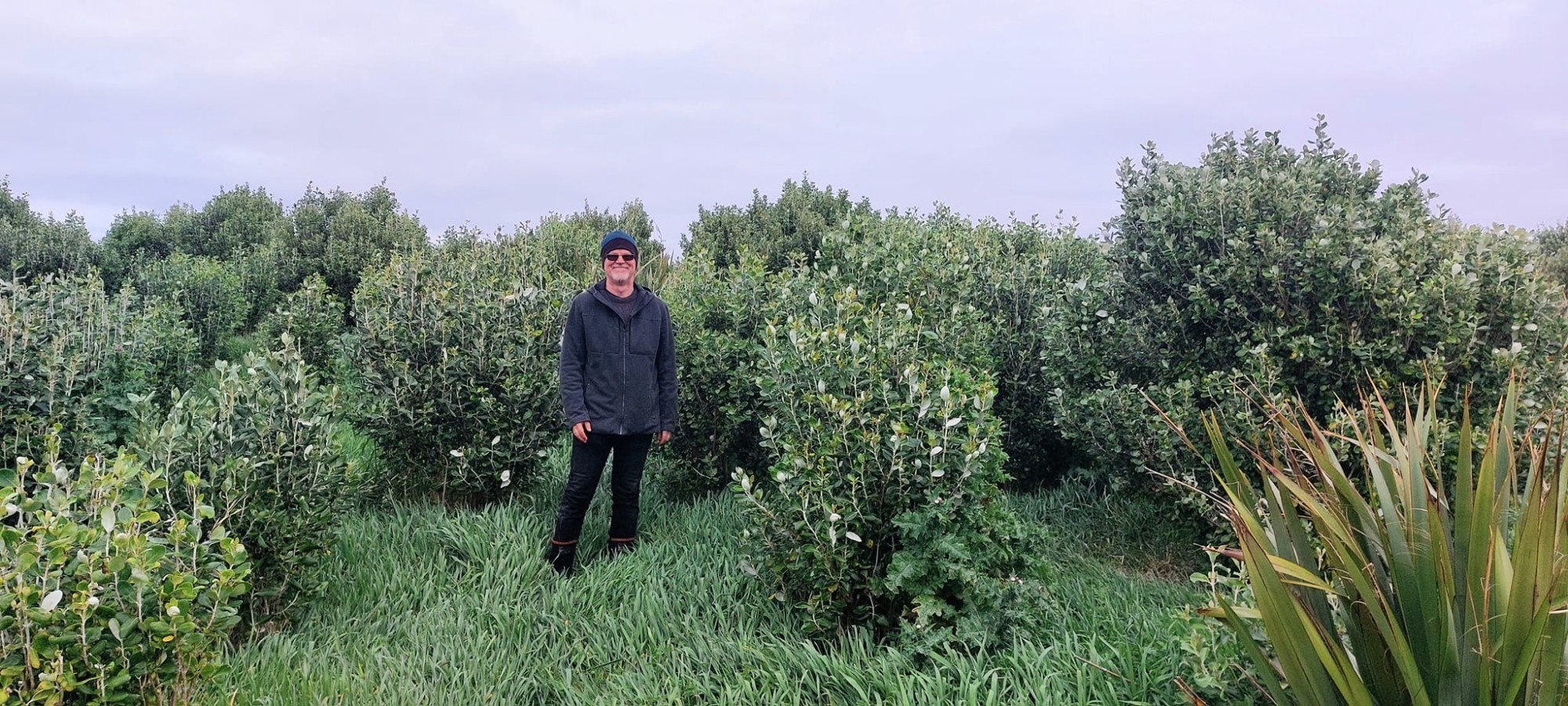
Peter de Lange in a planting of hakapiri at Manukau, 2024. Image: Tiffany McClunie

